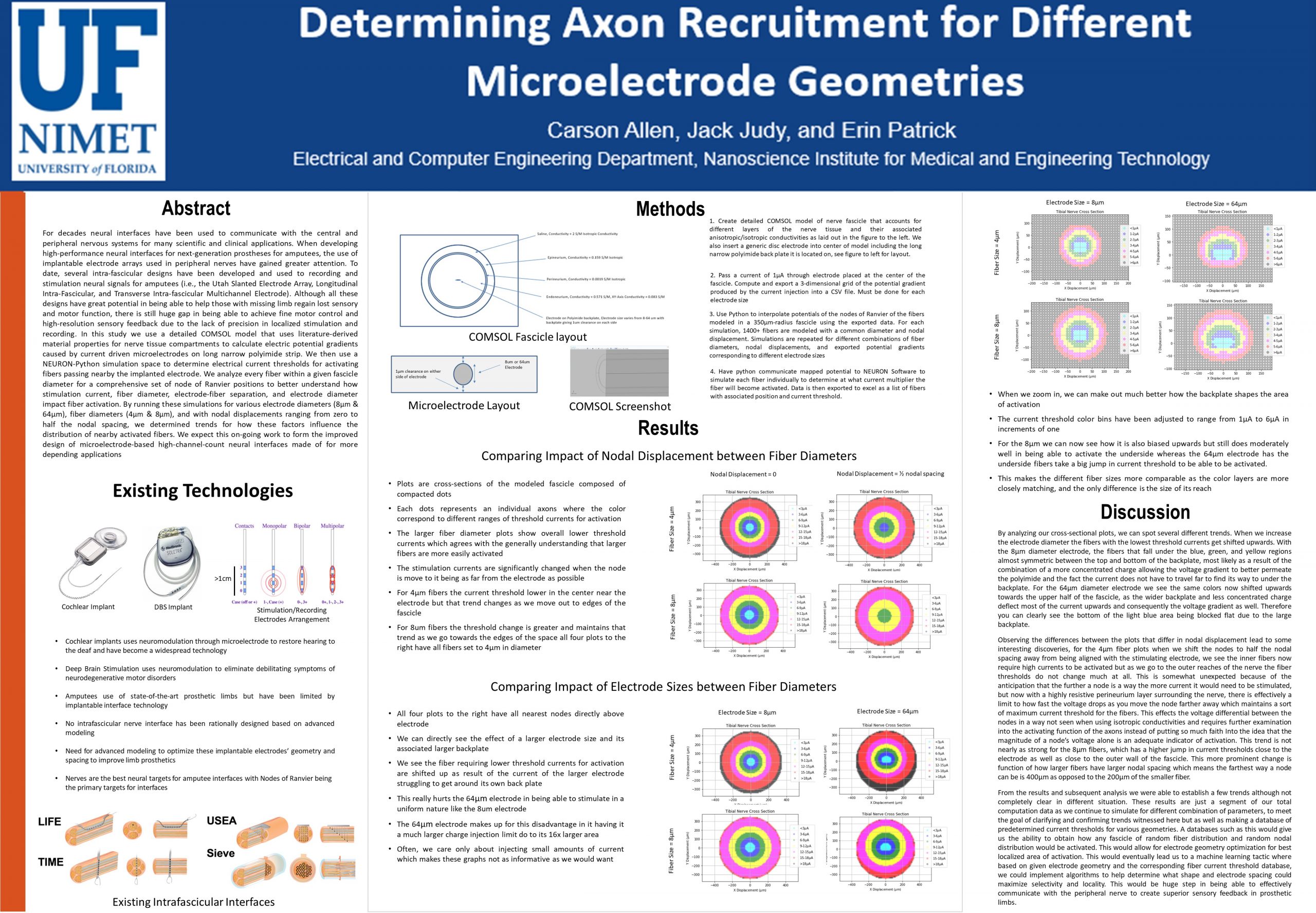Click to Enter the Poster Zoom Room: Poster 12 Zoom Link or Return to Poster Session 2 List

Predicting Axon Recruitment for Different Microelectrode Geometries Carson Allen (LinkedIn) Authors: Carson Allen, Jack Judy, Erin Patrick Faculty Mentor: Jack Judy, PhD College: College of Engineering Department: Electrical and Computer Engineering |
|
AbstractFor decades neural interfaces have been used to communicate with the central and peripheral nervous systems for many clinical applications. When developing neural interfaces for next-generation prostheses for amputees, the use of implantable electrode arrays used in peripheral nerves have gained attention. Several intra-fascicular designs have been developed (i.e., the Utah Slanted Electrode Array, Longitudinal Intra-Fascicular, and Transverse Intra-fascicular Electrode). Although all these designs have potential in being able to help those with missing limb regain lost sensory and motor function, there is still a huge gap to achieve fine motor control and proper sensory feedback due to the lack of precision in stimulation and recording. In this study we use a detailed COMSOL model that uses literature-derived material properties for nerve tissue compartments to calculate electric potential gradients caused by current driven microelectrodes on narrow polyimide strip. We then use a NEURON-Python simulation to determine electrical current thresholds for activating fibers nearby the implanted electrode. We analyze every fiber within a fascicle for a set of node of Ranvier positions to better understand how stimulation current, fiber diameter, electrode-fiber separation, and electrode diameter impact fiber activation. By running these simulations for various electrode diameters (8 – 64 µm), fiber diameters (2 – 16 µm), and nodal displacements ranging from zero to half the nodal spacing, we determined trends for how these factors influence which fibers become activated.
|
|
|
|
|
Poster Pitch |

